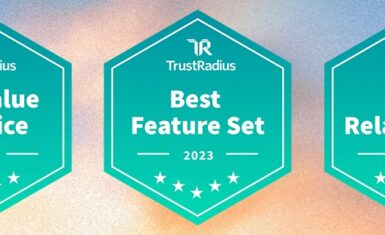Quick: name your most important stakeholders.
Is it your most loyal customers?
Your board?
Suppliers?
Community groups?
Investors?
Perhaps it’s hard to pick just one and put them at the top of the list. Without board approval, it’s hard to have a functioning executive team. Without suppliers, it’s hard to have product. Without customers, it’s hard to have revenue.
And yet, there’s another group that should not only warrant consideration, I assert that they should go right to the top. Higher than customers. Higher than suppliers. Higher than investors. Higher than the board.
That group: Your employees. All of them.
This isn’t some idealized, fawning reaction to the Great Resignation and war on talent. It’s a strategy. And it’s an important one. To be clear, we have been growing during the pandemic, attracting and retaining top talent when other organizations, particularly in tech, are struggling to keep folks on board. That’s not meant to be boastful, but rather an indication that this strategy has legs.
Employees should be #1. Here’s why.
It’s a bold premise that, at its core, couldn’t be simpler. If you’re looking to redirect and optimize a company, you should start by treating your employees like your most important stakeholders. In other words:
Let’s create the best work environment that any of you have ever dreamed of.
By virtue of creating the best imaginable work environment, it naturally follows that you’ll build the best imaginable service or widget or whatever it is you’re offering. Creating the best imaginable offering means you’ll have optimally satisfied customers. Optimally satisfied customers translate to better business, which leads to optimally satisfied suppliers, investors, board, etc.
Create the best work environment imaginable.
Easily said, right? The cascade of satisfaction feels obvious when you hear it, but it might be more intimidating to implement.
What does it look like to create the best imaginable work environment? The specifics will depend on who’s on the team and what they need, but the general idea is this:
An optimal work environment is one in which people can show up and feel like they belong. They have a sense of purpose and mission. They understand what they’re doing and why they’re doing it. They feel psychologically safe so they can share their perspectives and take smart risks. They feel valued – not simply for their presence but for their capabilities and contributions. They feel connected, whether they’re physically together or scattered all over the world. They don’t have barriers related to access or engagement. They feel empowered and inspired to do their best work.
That’s a lot to unpack. But if it doesn’t feel worth it to try to make the above paragraph a reality, you might want to unpack that. Leaders who aren’t willing to prioritize the employee experience are, increasingly, hemorrhaging talent. And it’s hard to satisfy any stakeholder when the work can’t get done.
Upend the traditional stakeholder priority list.
You probably won’t have to walk up to your customers or community and announce that they’re no longer your top priority. In fact, it’s better that you don’t.
But you might have to tell your C-suite or your board. Why? Because they deserve to know why you’ll be making certain changes. And upending the traditional stakeholder priority list does mean making some changes.
Change and discomfort are often two sides of the same coin, and you shouldn’t be surprised if there’s some initial resistance. And yet, prioritizing investors or boards or suppliers #1 doesn’t have the same cascading effect to employee satisfaction as the way employee satisfaction serves all those other stakeholders. (If it did, there would be no Great Resignation and you wouldn’t still be reading this.) They may have to see it to believe it. But done right, they will see it.
Ideally, creating a fabulous employee experience shouldn’t feel like a burden or sacrifice. It’s an investment, and one with phenomenal upside. This isn’t a revolutionary idea. It’s the future of work. And it needs to start now.






